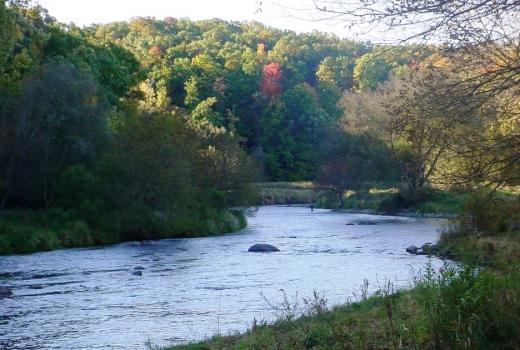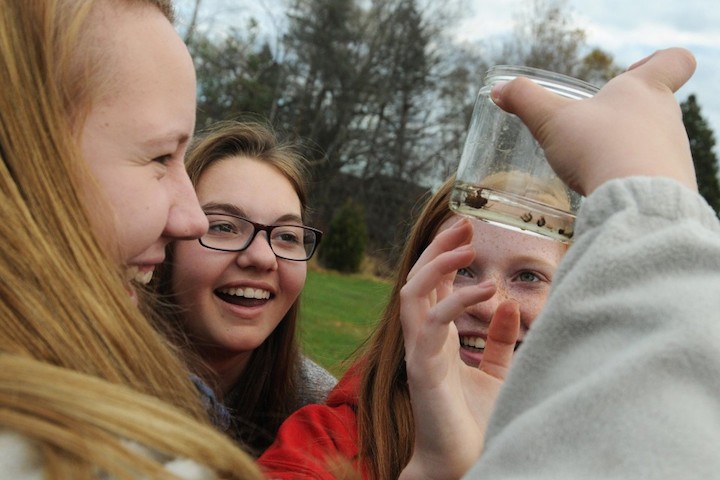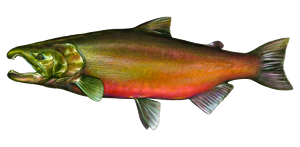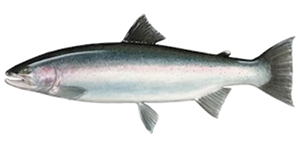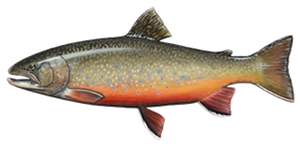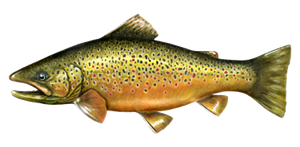Rogue River
Goals
Located near the second largest metropolitan area in Michigan, the Rogue River is an extremely important trout fishery in southern Michigan. The lower portion of the river is fabled for its excellent steelhead runs. The eastern tributaries host significant brook and brown trout populations. The river is an important economic engine — based on a recent Department of Natural Resources survey, the Rogue River brings in $485,000 per year to the local communities in angling trips alone.
However, the watershed is experiencing pressures from growth and development, resulting in rising summer water temperatures and excessive sediment input. Developed areas impact surface and groundwater resources in the watershed by generating large amounts of pollution from runoff and storm sewer discharge and eliminating porous surface for groundwater recharge. Activities that reduce groundwater or increase the delivery of warm surface runoff will have negative impacts on the Rogue River’s ability to support coldwater species.
Goals for 2016 include removing four fish barriers in the watershed to open up approximately 9 miles of coldwater trout stream in the middle of the largest city in the watershed, installation of approximately 200 stormwater practices (rain barrels, rain gardens, stream buffers) in the watershed, and developing specific goals and outcomes for a third phase of the Rogue River Home Rivers Initiative program to protect, reconnect, restore and sustain efforts in the watershed.
Tactics
TU is helping local governments develop and implement improved planning policies to protect rivers and is reconnecting and restoring local river systems by eliminating fish barriers and reducing sources of stormwater that are having a negative impact on the watershed. In addition, TU is engaging the community in watershed efforts by involving students in hands-on activities to protect their local waters, holding community events and the creation of a citizen monitoring program to help determine the conditions of their homewaters.
Victories
Protection - Since 2010, TU has helped seven local municipalities work towards adoption of new or improved planning policies to promote river protection using the Rogue River Stormwater Guidebook developed by Trout Unlimited and project partners. This guidebook is also being used by other communities outside of the Rogue River watershed to address stormwater runoff in West Michigan.
Reconnection - We’ve assessed 200 barriers to fish mobility in the watershed and prioritized them in a larger Lower Grand River fish barrier assessment strategy. Nine fish barriers in the watershed were identified as top priorities. TU and local partners have received grant funds to remove four of these barriers. This work will open up approximately nine miles of coldwater trout stream in the middle of the largest City in the watershed.
Restoration – Since 2010, TU has distributed 350 rain barrels to residents in the watershed and installed 14 green infrastructure practices totaling 20,000 square feet of stream buffers, rain gardens, and bioswales. In addition, TU is working with partners under an EPA Urban Waters grant to establish a regional program that offers incentives to residents and businesses that install green infrastructure practices. As part of this grant, TU has been able to support a two-year summer work program for high school students in the Rogue River watershed (aka Green Team). The purpose of this work program is to educate these students on the impacts of stormwater runoff to our local streams and provide them with hands-on work experience in the installation and maintenance of these stormwater controls. Over the past year, 16 high school students and three college students were part of this program.
About 50 percent of the land in the Rogue River watershed is agricultural. Therefore, the HRI project is also addressing impacts from rural areas. TU received funds from the Great Lakes Restoration Initiative to restore a section of Cedar Creek - a significant source of cold groundwater to the Rogue River. This past year 700 feet of trees and other native plants were planted on the streambanks, cattle were fenced out of the creek in this section, and more than 1,000 feet of instream habitat was installed. In addition, a 36-acre parcel that was once pasture was enrolled in the Wetland Reserve Program with the Natural Resources Conservation Service as a result of one of the wetland workshops that TU held in the watershed. This wetland will be conserved in perpetuity.
Sustainability – Since 2010, we’ve engaged more than 1,000 people in community events where over 25 volunteers have been trained as citizen monitors to collect crucial data in the watershed. The Rogue River HRI project is involved with schools and home school groups in the watershed offering water quality monitoring opportunities for teachers and their students. TU has directly engaged over 800 students in analyzing the health of their local waterways using leaf packs and stream insects. Of those students, 150 have executed on-the-ground restoration projects. We work closely with students to educate them on watershed concepts, the types of pollution that impact our waterways and where it comes from, and how TU carries out activities that protect and restore these resources.
Local foundations and other donors have awarded TU $447,128 to carry out these activities and support a second phase of the Rogue River Watershed Home Rivers Initiative (October 2014 – September 2016).
Staff Contact
Author of this Page
Nichol De Mol

